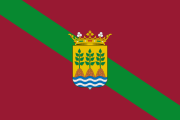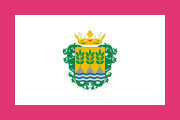


8. Trip to the South of Spain
8. Trip to the South of Spain
February 25 to March 7, 2022


143. Baza
143. Baza
Bazais a city with a lot of history known for its archaeological discovery as important as the lady of Baza. This site is from the Iberian era and dates from the 4th century BC.

 On my visit, I first went to the main square where I could see the collegiate church and the town hall. A square in which the co-cathedral stands out above all the above.
On my visit, I first went to the main square where I could see the collegiate church and the town hall. A square in which the co-cathedral stands out above all the above.
The Collegiate Church of Nuestra Señora Santa María de la Encarnación, Baza Co-Cathedral or Iglesia Mayor is Renaissance in style, was built in the 16th century and was built on the remains of the Muslim aljama mosque. Initially, it was opened to Christian worship after its sacralization, maintaining its structure as a mosque. In it two large shields stand out, on the column and the doors that give it a certain medieval air. Inside it is in the Gothic style with ribbed arches but they do not have important altarpieces.
Within the city is the archeology museum which is located in the old town hall, in Renaissance style. It has many remains of Iberian sites in the area, as well as Romans and Arabs. The most important thing is related to the lady of Baza for which there is also an interpretation center from where it was extracted on the outskirts of the city (the ancient city of Basti ). Remember that it is a replica since the original is in the Archaeological Museum of Madrid. We also have the royal room with everything related to the title of city that they would gain in the reign of the Catholic Monarchs. This has a very successful Mudejar coffered ceiling.




Other interesting buildings are the fountain of golden pipes, which is an old fountain made in the time of Felipe III with his royal coat of arms, the Arab baths that have been recently restored and are intact and complete. Together with the baths of Jaén and Granada, they are the best preserved in all of Andalusia. This is because they were buried under the old street.

As religious architecture, in addition to the collegiate church, there is the church of San Juan with a Mudejar coffered ceiling that can be seen in the following image. It dates from the 16th century and responds to patterns and characters typical of Mudejar constructions.
Built on top of the mosque that stood in this same place, in the suburb of Argedid, next to the Puerta de Armesto, it was erected a parish in the year 1505 in this neighborhood where ninety percent of the neighborhood was Moorish.


The dressing room of the church of Los Dolores also stands out, which is unrestored and can be seen in the following image and is at high risk of being damaged. It is an authentic jewel above the church that is not open to the public. Another building that is in full restoration is the monastery of San Jerónimo that I also show in the image.



After Baza I went to the site of the lady of Baza. The Ibero-Roman city of Basti: just three kilometers from today's Baza is Cerro Cepero, the site of the Ibero-Roman city of Basti. This was one of the main Iberian fortified cities in the entire country, to the point of giving its name to an extensive region, Bastetania. In it was found in 1971 the well-known Lady of Baza, one of the best examples of Iberian funerary statuary and Iberian art. Then he would shoot towards the province of Almería.



144. Vélez Rubio
144. Vélez Rubio


145. Vélez Blanco
145. Vélez Blanco





 The Junta de Andalucía would buy it and since then it has received several reforms. The last one has secured its access and different panels have been placed with the history of the castle as well as closed and well isolated different rooms. It is currently in the process of undergoing a final reform to achieve a look very similar to the one it had, making replicas of the original courtyard of the one found in New York.
The Junta de Andalucía would buy it and since then it has received several reforms. The last one has secured its access and different panels have been placed with the history of the castle as well as closed and well isolated different rooms. It is currently in the process of undergoing a final reform to achieve a look very similar to the one it had, making replicas of the original courtyard of the one found in New York.


146. Lorca
146. Lorca



 Nearby stands out the House of the Corregidor, with a very imposing side shield of the same quality as those found in palaces in Extremadura, from the 16th century, and the craftsman's house with the coat of arms of Carlos V on its facade. The town hall next to the collegiate church and the Plaza Mayor does not leave you indifferent, in Renaissance style with large shields of the Bourbon reign from the early eighteenth century.
Nearby stands out the House of the Corregidor, with a very imposing side shield of the same quality as those found in palaces in Extremadura, from the 16th century, and the craftsman's house with the coat of arms of Carlos V on its facade. The town hall next to the collegiate church and the Plaza Mayor does not leave you indifferent, in Renaissance style with large shields of the Bourbon reign from the early eighteenth century.




 It also highlights the War theater of the mid-nineteenth century. Its interior is decorated with different paintings from that time that gives it a Venetian air.
It also highlights the War theater of the mid-nineteenth century. Its interior is decorated with different paintings from that time that gives it a Venetian air.


© 2016 - All Rights Reserved - Designed by Sergio López Martínez